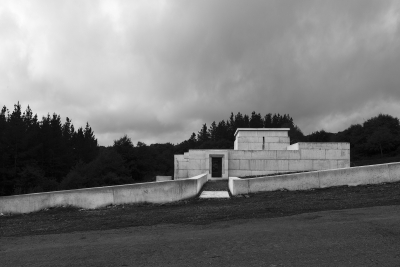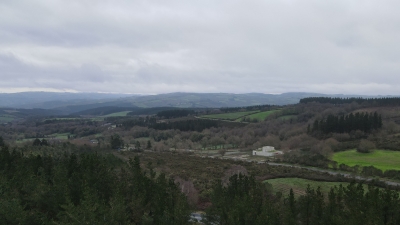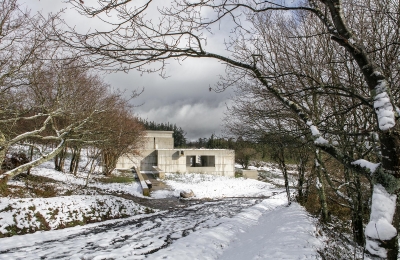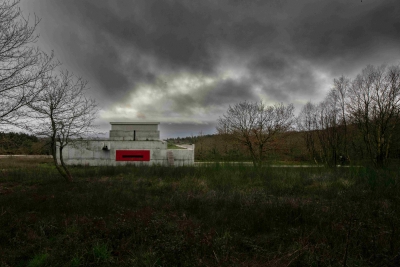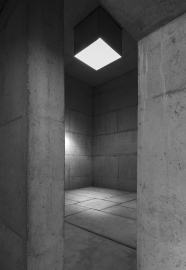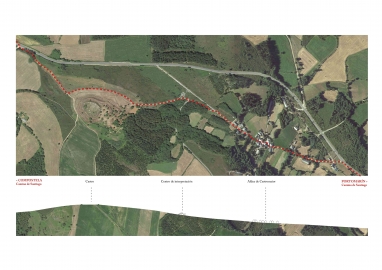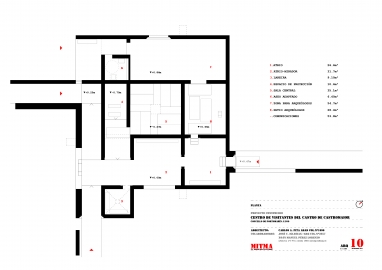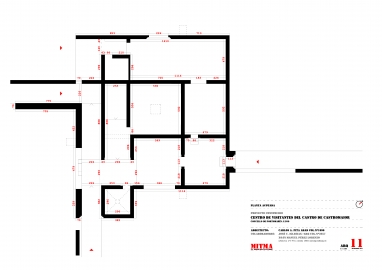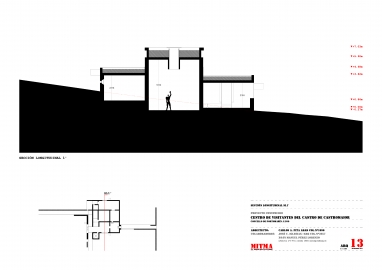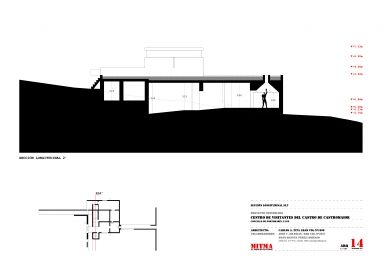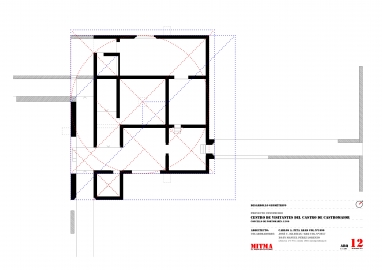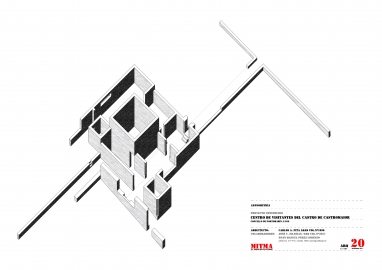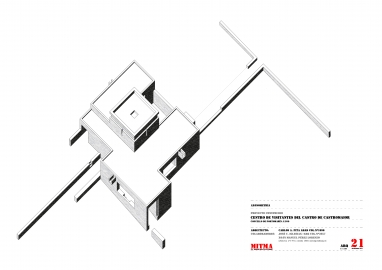Interpretation centre Castromaior
The Camino de Santiago crosses the Castro de Castromaior on its way to Compostela. The CENTER is proposed as an invitation to discover the castro. A stop on the way for the pilgrim to rest, an atrium protected from the sun and the rain, from which to observe what has been walked and what is still to be walked. A MENHIR immersed in the timelessness of the landscape.
The Camino de Santiago crosses the Castro de Castromaior, an important archaeological site from the Iron Age, on its way to Compostela. At its feet the CENTER is proposed as a door and invitation to discover and visit the castro, while it emerges as a stop on the road, as a rest for the pilgrim, as an atrium protected from the sun and rain from which to glimpse what has already been walked and what is yet to be walked.
The CENTER is always visitable and habitable without the need for permanent staff, since this should be an unaffordable burden for the budget of the small council like Portomarín. A low cost public facility with almost no maintenance that, like Galician rural churches, must be cared for by the residents of the village.
A construction without a birth certificate or author, rooted in the earth like the wise popular architecture.
A stop on the CAMINO de Santiago that becomes landscape
From the top of Castromaior, in 360º, you can see, in addition to its characteristic interior landscape, the entire mountainous eastern border of Galicia. In front, between mountains, the entrance to Galicia of the Camino de Santiago. This allows us to propose a new type of interpretation center, which goes beyond the small museum model, to immerse the visitor directly in the geography where it is located. From here, weave together a network of already existing sites and museums that enable a more active vision of Galician prehistoric culture. The Center as a landmark, as a menhir, or rather as a “Cruceiro”, the way in which crossroads, crossroads, have historically been marked in Galicia.
A stop on the Camino where the visitor and the pilgrim not only rests and takes refuge, but also immerses themselves in the history and Galician geography that they have traveled and have to travel. A place where looking back enriches us. It has always been frowned upon to look back at Lot's wife, Eurydice, Orpheus, Aeneas... On the contrary, looking back at Castromaior invites memory, contemplation and reflection, to allow us to decisively continue our path forward.
We work on an architecture that implies, as a value, the honesty and ethics of the material, of its construction. An architecture of great carnality, without details. The finishes are the very consequence of the construction process. Architecture that strips away everything to stay in the essential.
Without aftertaste, oblivious to all fetishism. The material becomes a constituent of the place, geometry and gravity give it shape. A single material, reinforced concrete. And the earth of the place.
The center disconnected from the general network has zero CO2 emissions and almost zero maintenance cost.
Necessarily realistic architecture, a concept used by the master Sigurd Lewerentz when he said to his collaborator Nyberg, while holding his eternal cigar in one hand and in the other a brick from the s:t Petri Kyrka factory: do not exaggerate in your new project . You don't need to be extravagant, just be realistic. as realistic as when you choose shoes in which you will have to go a long way.
An objective, concrete architecture, far from inspiration, self-expression. aware of being working in a privileged natural and archaeological space, which we must protect and respect.

